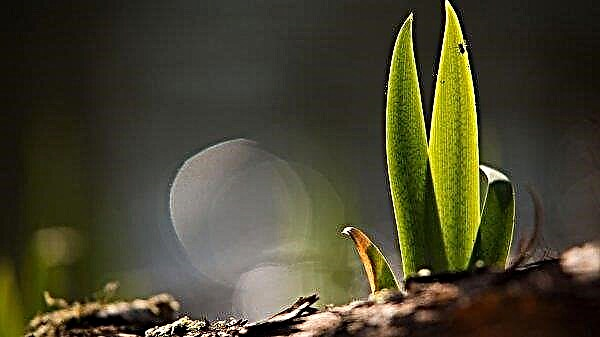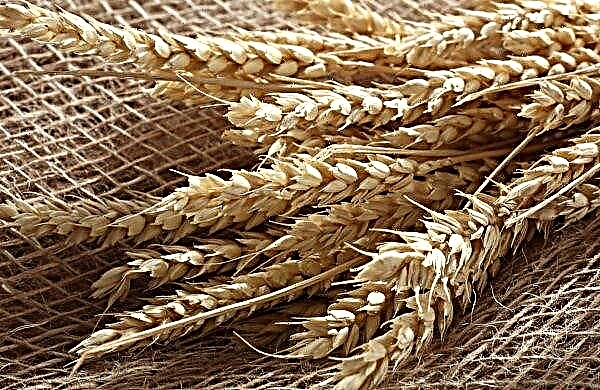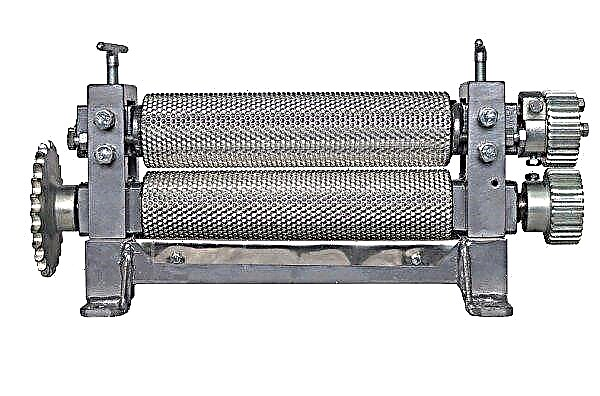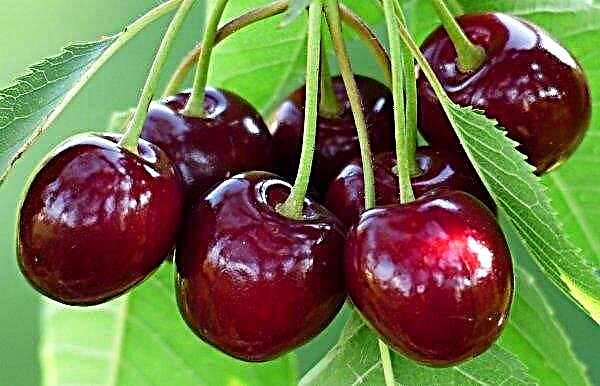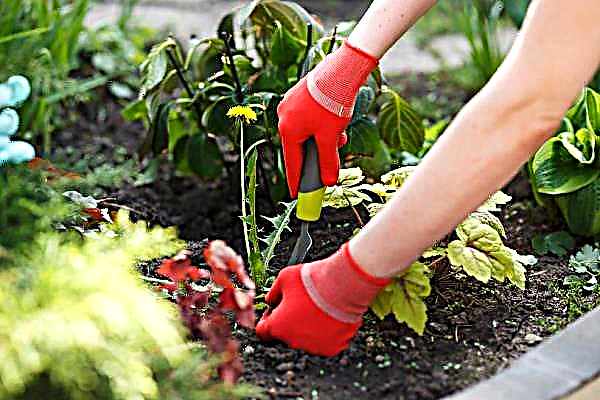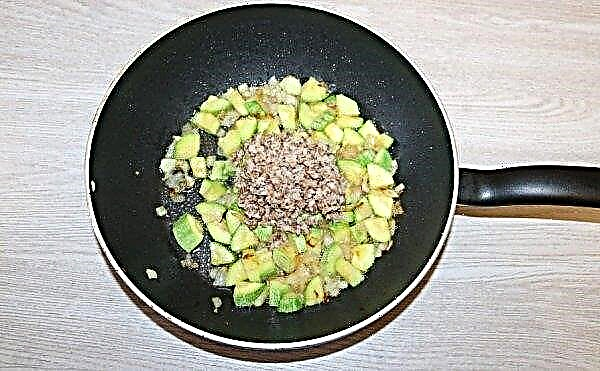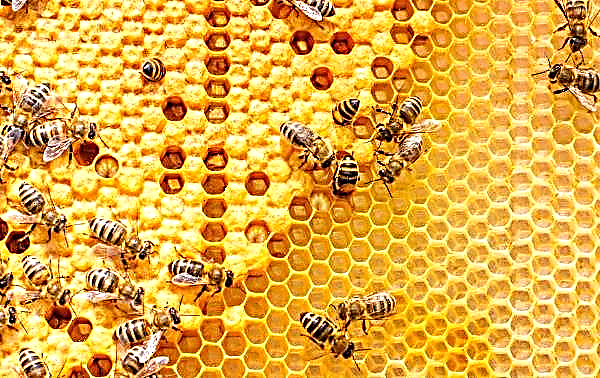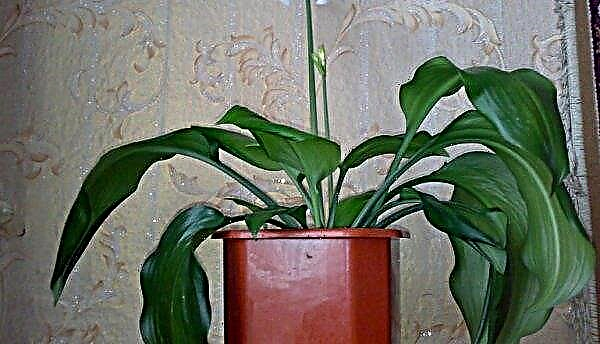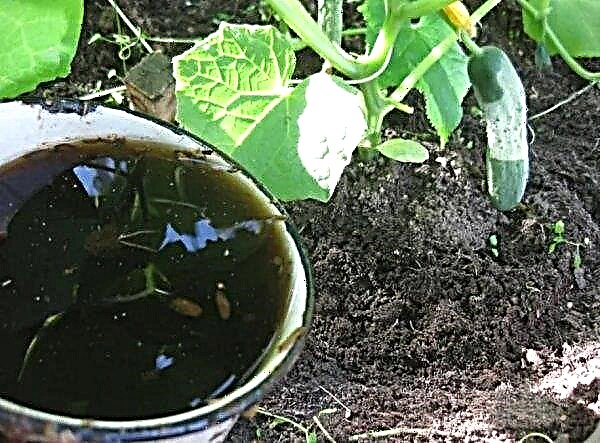Apple trees are among the most common fruit trees of our latitudes and this is not surprising. Indeed, in addition to the unpretentiousness and comparative ease of agricultural technology, a rich harvest of apples is used everywhere in food - both in fresh form, and in juices and preservation.
But a huge number of different varieties can be confusing and makes the choice very difficult. Consider one of the most popular varieties, which, due to its high characteristics, has earned wide popularity among many gardeners in different countries of the world.
Selection history
Mutsu apple was bred in Japan in the 30s of the last century, from where it was later brought to Ukraine, Russia, and many CIS countries. This variety got its name in honor of one of the provinces of the producing country and was the result of the crossing of two varieties - the famous Golden Delishes and the local Indo.
Today, the Mutsu variety is not used as an industrial plantation, but has gained wide popularity in private garden plots and has been highly appreciated by independent experts.Did you know? According to statistics, every second fruit tree found in the world is an apple tree.
Description and characteristics of the variety
Mutsu apples are winter varieties, which mature in late October. The variety is partially self-fertile and early-growing - depending on the method of propagation, the first crop can be obtained already in the second year of the tree's life.
Tree description
The type of tree of this variety may vary somewhat, depending on the region of cultivation. So, gardeners in the southern regions mark trees as very tall, while in a temperate climate they indicate a decrease in growth characteristics and classify plants as medium-tall.
Also, age also affects the growth rate - up to 7 years old young trees grow more actively than in the future. The total height of the tree varies in accordance with the stock from 2.5 m to 4 (dwarf and seed stock).
The crown of apple trees has a rounded shape, which during life can transform into a pyramidal or back-pyramidal. The foliage is average, but the crown itself is not thickened. Large-sized leaves with pubescence on the back, saturated dark green.
Since trees of this variety have an average shoot-forming and shoot-reducing ability, the center of the crown often remains bare, which makes it possible for apples to warm better in the sun.
Video: Mutsu variety apple tree
Fruit Description
The fruits of this variety are quite large in size, the standard weight reaches 150 g, however, may vary slightly depending on weather conditions and the quality of the soil in which the tree grows. Apples are rounded conical or rounded in shape, have slightly beveled sides and small ribbing.
During ripening, apples acquire a yellow or green-yellow color, with a pink tint on the side facing the sun. The flesh is juicy and fragrant, light yellow in color and medium in grain. The skin is smooth and shiny, but quite dense. The total tasting score of the apple is 4.5–5.0.

Important! The taste characteristics of apples of this variety are fully disclosed only a few months after harvest.
The timing of flowering and fruiting
Mutsu inflorescences are medium in size and saucer-shaped, as well as a milky hue. The flowering process begins on a medium-late date, in the month of May, which avoids damage to the ovaries in the case of spring frosts.
Since these apples belong to winter varieties, harvesting starts from the end of September and can last until the end of November - the fruiting period may vary slightly depending on the climate of the region and weather conditions.
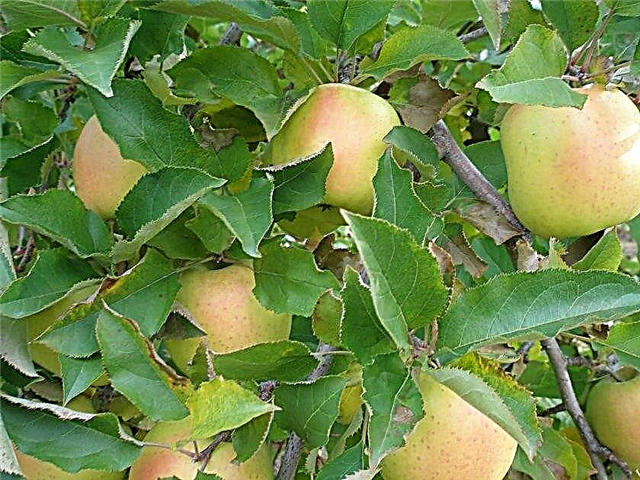
Grade stability
The Mutsu variety has an average winter resistance, therefore it requires additional warming in the winter, and at temperatures below –35 ° C it can freeze and suffer severely. The same applies to immunity - the average level avoids the defeat of most fungal diseases, but there is a high probability of infection with scab and powdery mildew, especially in conditions of high humidity.
Also, these apples can suffer from an invasion of pests, especially the codling moth, which eats away the seed chambers of the fetus. One such caterpillar can spoil up to 5 apples.
Pollinators
The Mutsu variety is triploid and self-fertile - this means that the number of viable pollen does not exceed 3%, and the number of apples is not more than 6% of the inflorescences. Therefore, to achieve a rich harvest, the apple tree needs well-selected pollinator cultivars. Such varieties can be Idared, Gloucester, Jonathan.
 Mutsu cannot be a pollinator for other species of apple trees.
Mutsu cannot be a pollinator for other species of apple trees.
Advantages and disadvantages of the variety
- Apples of this variety are endowed with many advantages that distinguish them from others:
- high taste indices - 4.5–5.0 points;
- hypoallergenicity and almost complete absence of coloring substances;
- high storage and transportation.
- The main disadvantages are as follows:
- the average level of winter hardiness, which requires additional shelter in the cold season;
- medium resistance to diseases and pests.
Planting varieties
Experienced gardeners note that following the basic rules for choosing and planting a seedling will provide a stable and rich harvest for many years.
Choosing a seedling to plant
When starting to choose a seedling for a garden, it is necessary to take into account several main factors:
- The optimal seedlings will be a one or two year old plant. To correctly determine the age of the tree, one should pay attention to the number of additional branches: annuals do not have developed branches, and in two-year-olds their number does not exceed four.
- The root system and the aerial part should be slightly moist and elastic, without signs of dryness or rotten diseases. As a check, you can bend the branch into a ring and see - the shoot should bend easily and not break, and the bark on the bend should gather in an accordion, but not burst.
- According to GOST, deciduous cover should be completely absent on the seedling.

The most suitable landing dates
The process of planting apple trees can be carried out throughout the year, but the preferred time is still the autumn or spring period, each of which has its own pluses and minuses.
Planting in autumn is more suitable for southern areas with a mild climate and not severe winters, as well as regions in which black earth predominates. Sapling planted in early October, during the winter manages to settle in a new place and grow into the ground, grow stronger in the roots and in the spring has the opportunity to begin to actively develop and grow.
Planting in the spring provides seedlings with enough time to grow stronger and calmly survive the winter frosts. The duration of this procedure may vary somewhat, depending on weather conditions - from the second half of April to early May.
We advise you to familiarize yourself
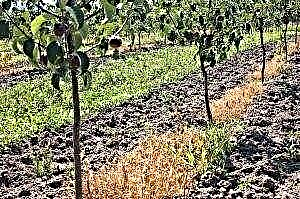
Young plants whose age does not exceed two years are recommended to be replanted in the spring, but trees from a more mature age are planted in the fall.
Adult plants need to be replanted in the autumn or winter - that is when the tree is at rest and easily tolerates rhizome injuries and a change in location.
Rules for choosing and preparing a landing site
Getting to the choice of soil and place of planting, you need to pay attention to some points:
- the most suitable soil for planting a seedling will be chernozem, which is light and friable;
- the place should be lit with a sufficient amount of light, and the groundwater level should not be less than 2.5 m from the surface;
- The north side of the landing site should be protected from the wind.
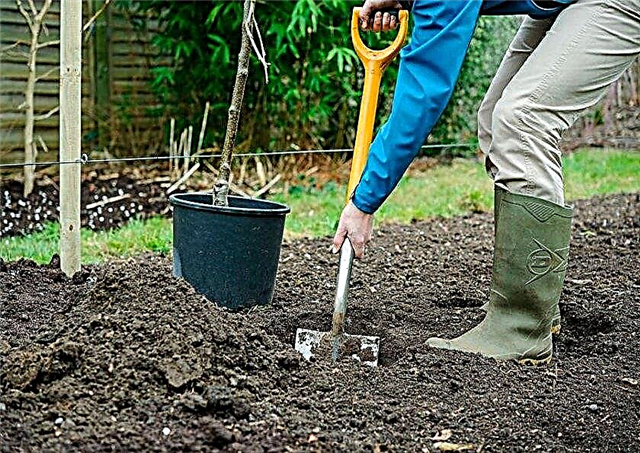
However, if you can still choose a place on the site, then, alas, there is no soil.
Without chernozem, the soil a year before the proposed planting is prepared as follows:
- Clay soil is dug up to a depth of 50 cm, and then fertilizers are needed with the expectation that 40-50 kg of sand, 10-15 kg of sawdust, about 15 kg of humus, peat or compost, 1/2 kg of lime will be needed per 1 m². Also, the soil is additionally fertilized with complex mineral and potash fertilizers and superphosphates. After that, it is recommended to sow the soil with siderata and mow them before flowering.
- The sandy soil is dug up to a depth of 40–50 cm and about 40–50 kg of clay, 15 kg of organic fertilizers, 1/2 lime, as well as superphosphates and potassium are applied (the amount of fertilizers is calculated per 1 m²).
- Peat soil is prepared by lowering the level of groundwater - for this purpose, you can use drainage or dig trenches. Further, depending on the peat layer, the soil is dug up and sand is applied (calculated per 100 m 4 m sand), then about 2 kg of organic fertilizers per 1 m², as well as superphosphates and lime, depending on the level of soil acidity.
Video: How to properly prepare a plant seat
Direct landing technology
After you select a place on the site, and the soil is cultivated, you need to start work on the preparation of the planting pit, which is carried out a few months before planting a seedling, which allows the ground to sag and evenly moisten. The diameter of the hole for medium-sized apple trees is about 80-100 cm, and its depth is up to 50 cm. Digging a hole, the soil is divided in two - the upper layer, more fertile, and the lower.
The bottom is well loosened, and the pit itself is covered with a top layer of soil, and after a mixture of humus and compost, until a low mound is formed. Then the seedling rhizome straightens and is covered with soil and fertilizer, carefully making sure that the root neck protrudes a few cm above the surface. Most apple varieties require a support peg to which a seedling is attached, but Mutsu does not need this.
After planting, the earth in the near-stem circle is rammed, and a shallow hole 1.2 m in diameter breaks around the seedling, into which several buckets of water are poured (about 20 l). Then, the soil is mulched using foliage and humus, which will save the earth from drying out. The trees are planted according to the scheme - 5 × 6 m.

Important! In the process of mulching, it is highly not recommended to use coniferous sawdust, since they lead to an increase in the acidity of the soil.
Features of apple care
Like planting rules, proper further care is crucial for the growth and healthy development of the tree. Performing simple procedures, you can easily achieve a quick and rich harvest.
Basic watering rules
The most favorable methods of watering apple trees include the drip irrigation method, during which water is poured directly under the tree rhizome, which provides the greatest nutrition and significantly reduces the amount of water needed. The basic irrigation standards are influenced by the age of the trees.

Seedlings of the first five years of life require more frequent watering, but in smaller volumes:
- annuals require about 20-30 liters of water per 1 m of the trunk circle;
- two-year-olds - 40-50 l;
- trees from 3 to 5 years old - 50–80 l;
- mature trees after 6 years of life - about 10 buckets of water.
The first application of water is carried out in the spring, at a time when the buds have not yet blossomed. Further, young trees (up to 5 years old) are watered every 7–10 days, and adults are watered during the formation of the ovaries. Then, adult apple trees are watered two weeks before harvesting and before the trees are prepared for wintering.
How often is it necessary to feed
Fertilizing is an important process during the period of active tree development, and depending on the needs of the plant, the type of fertilizer changes during the year:
- in late spring, during the flowering period, apple trees are fed with urea (1/2 tbsp.spoons per 1 m of the trunk circle);
- in June, 1/2 g of boric acid and 2 g of copper sulfate dissolved in 10 l of water are introduced into the soil;
- in the second half of August, the soil is fertilized with superphosphates and calcium chloride (about 30 g per 1 m²);
- in September, the soil of the near-stem circle is covered with manure or compost.
Cropping and shaping the crown
Pruning is a mandatory apple care routine and needs to be systematic. This process is recommended to be carried out 2 times a year - in the spring, when damaged branches are removed and the crown is formed, as well as in autumn, when pruning involves more intervention.
Several basic pruning methods are known:
- Longline sparse formation - the most optimal pruning option, which involves the formation of branches in the form of tiers.

- The method of cup-shaped formation - A similar method with longline formation, but is used more often for dwarf trees, with a short life span.

- Spindle trimming - removal of the main processes using secateurs (the easiest way).
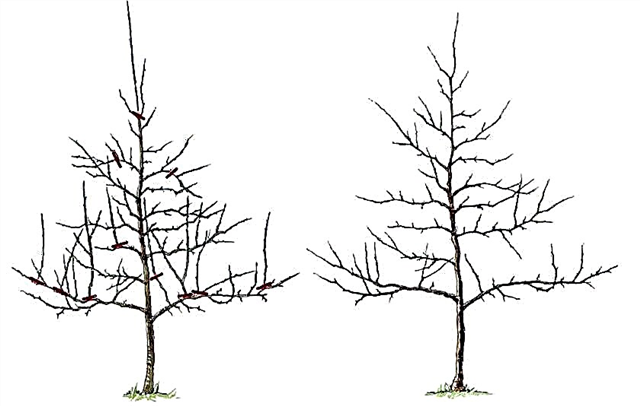
- Anti-aging formation - used for long-lived apple trees, with the aim of extending the fruiting period.
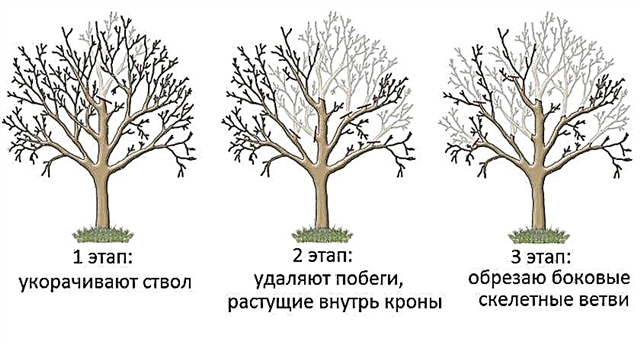
- Vertical palmetti - used for trees that are located along the facades of buildings or fences.

Pest and Disease Control
Mutsu cultivars do not have sufficient immunity to common diseases, and therefore, like all fruit trees, they are susceptible to the defeat of fungal diseases, as well as to the invasion of pests.
Here are the most common of them:
- Scab - A disease that affects both inflorescences and foliage, as well as the fruits and shoots of a tree. The main reason is considered high humidity, which can lead to both climatic conditions (fog, rains), and frequent watering. The manifestation of the disease is light green spots on the outside of the leaves and on the apples themselves. Various fungicides are used for treatment and prevention, and it is also recommended to remove fallen leaves and dig the soil around.
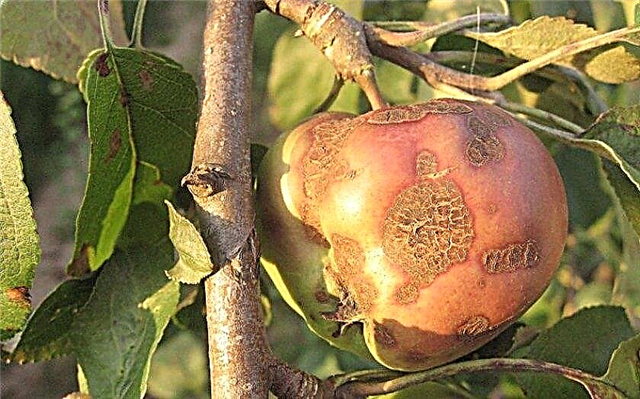
- Black cancer - a disease that manifests itself in the form of dirty purple or squeezed spots on the bark and trunk of a tree. In the process of development, the affected areas crack and become covered with dark spores of the fungus. Usually, such a disease manifests itself on apple trees aged 20 years. Such a disease is not amenable to treatment, and therefore the affected areas of the plant are removed, and the cut sites are treated with a solution of copper sulfate.
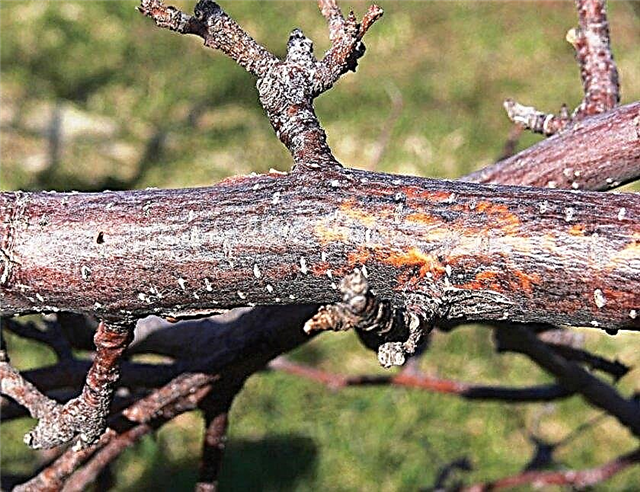
- Powdery mildew - the disease manifests itself in the form of a white coating over the entire surface of the tree, eventually turning into brown patches with dark patches. Disease prevention is carried out during foliage blooming and consists of spraying a tree with a 1% solution of Bordeaux fluid.
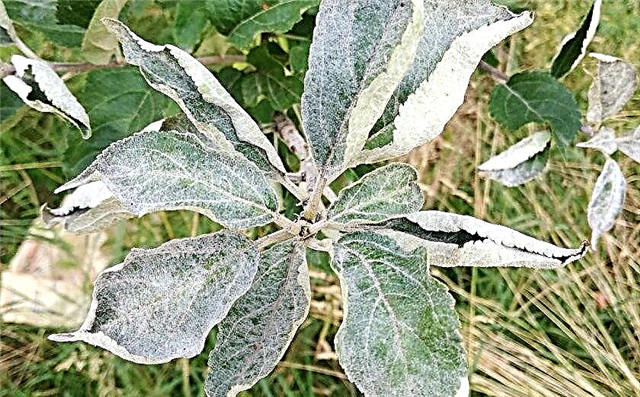
- Rust disease - star-shaped growths, due to which the leaves fall, and the winter hardiness of the whole tree is lost. It is treated with fungicidal drugs.
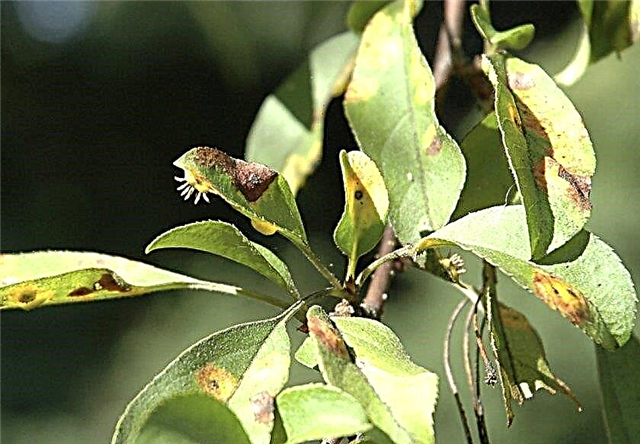
- Aphid - pests that parasitize on the foliage of the tree and suck out the juice from them, as a result of which, the leaves curl and fall off. For prevention, every spring, before budding, the trees are treated with a 3% solution of malathion.

Harvesting and storage
Since Mutsu apples are a winter variety, harvesting is carried out from late September to early October (depending on the region and weather conditions). However, full ripeness of the fruit occurs only after a few months - in December.
Did you know? The most famous long-lived fruit tree is an apple tree, which was planted in the middle of the 17th century in America and still bears fruit.
Due to its thick and dense peel, apples of this variety are perfectly stored and suitable for long transportation. Provided that immediately after harvesting, apples are placed in a constant place, with an air temperature of about + 4 ° C, the shelf life can last until April-early May , without loss of taste and external data.

Apples are best stored in plastic or wooden crates. First, they must be sorted by size and sprinkled with layers of fruit with dry sawdust or small chips.
Due to its high palatability and positive characteristics, the Mutsu apple variety has become firmly established and has gained well-deserved popularity among the owners of summer cottages. A high-quality and rich harvest of these apples, even with minimal effort, constantly attracts both professional gardeners and beginners in this field.
Network user reviews
I’m surprised that many people don’t like the taste or are criticized for it, you know ... We have many varieties of apple trees, I removed more than half from the site, Mutsu is one of the best in all respects! I understand that the taste and color ... but few varieties can boast of such a look, taste and productivity. One thing only, you can’t delay the cleaning for a long time, this is not Fuji for you))) Otherwise, it will not be stored for a long time and after a month it will lose its crunch and juiciness, that is, it will loosen. The optimal cleaning time for us is the beginning of October.











